'The Writing Pen: a new book containing several alphabets and various moral judgements as well as descriptive formulae, bills of exchange, maritime policies, waybills, and other trade writings in the current style, with a final table of Roman numerals' is an approximate title translation for this slender 18th century Italian volume for improving handwriting skills.
[Each image has been cropped back to the plate border from the full page
layout, and most plates were rotated to get them nearer to true horizontal]


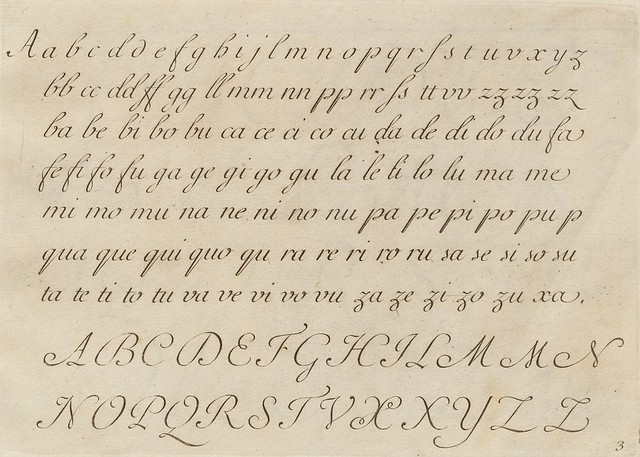



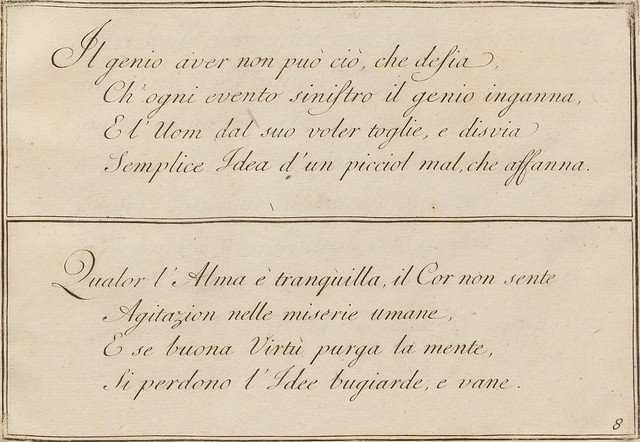
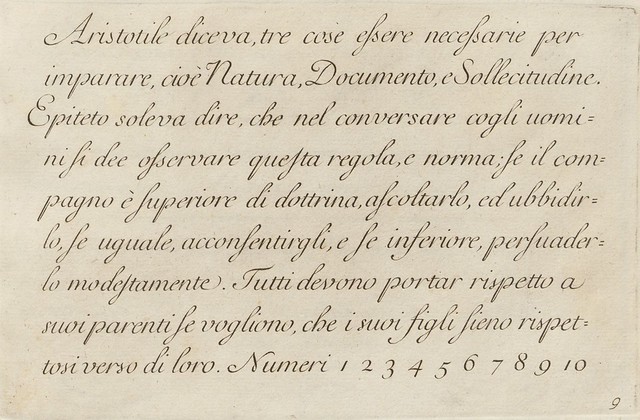

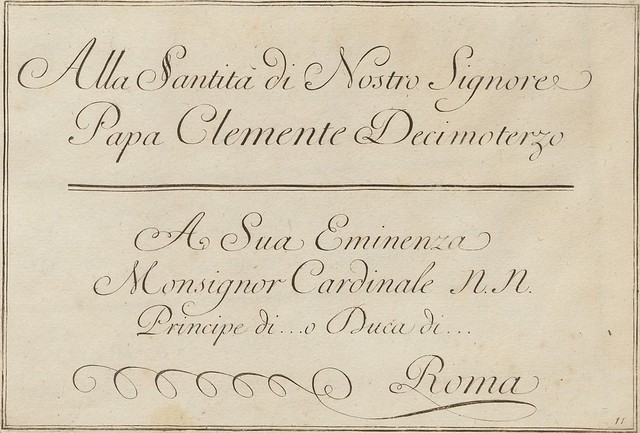
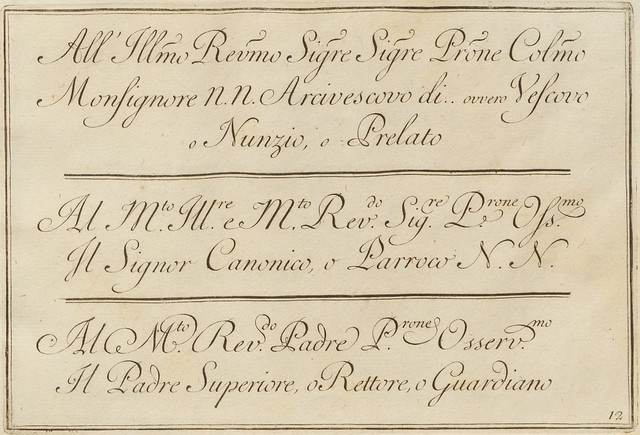
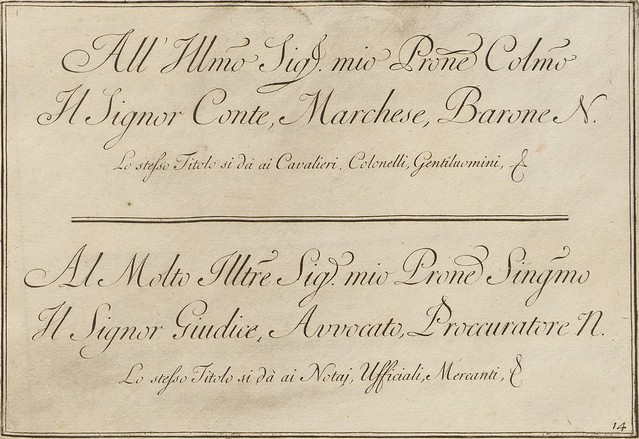
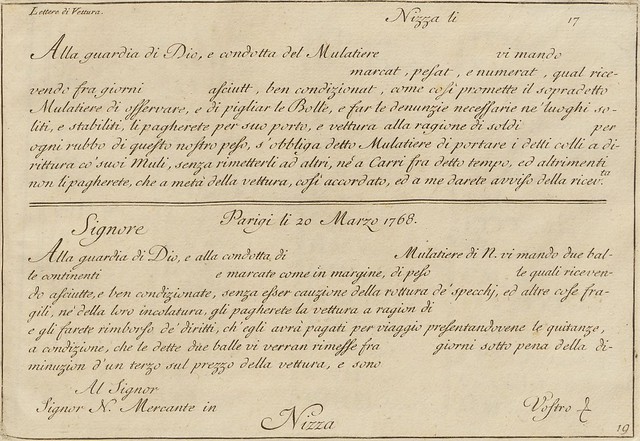
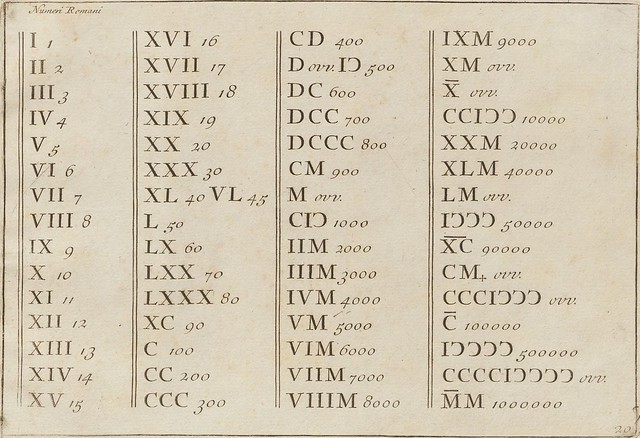
Francesco (Felice) Polanzani (1700-?1783) entered into an engraving apprenticeship in Venice under the tutelage of Giovanni Pitteri before settling in Rome in 1742. The following 20 years are regarded as Polanzani's most active professional years, with the majority of his engraving and etching output being modelled after paintings by the Masters (see, for instance, this web set at Thorvaldsens Musem in Denmark).
While in Rome, Polanzani became a friend - and/or student - of the renowned architectural illustrator, Giovanni Battista Piranesi. Polanzani is perhaps best remembered for his eccentric portrayal of Piranesi:
"In the famous portrait [1750], etched by Felice Polanzani but surely devised by the subject himself, Piranesi appears as the reincarnation of an antique bust looming over an ivy-covered slab of stone.." (ED Howe, 'The Art of Exaggeration' 1995)'The Writing Pen..' (the book seen above) was designed by Felice Polanzani and published in Rome in 1768 by P&G Samonati. This copybook consists of a title page and nineteen engraved plates featuring alphabets and writing samples reflecting contemporary business and letter styles. It may have been aimed at clerks and office worker-types of the day, who could practice their handwriting using the commercial letter and fine cursive samples as models.
The founding curator of the Printing and Graphic Arts Collection at Harvard University's Houghton Library, Philip Hofer, assembled an impressive array of writing and penmanship manuals in the first half of the 20th century; including Polanzani book. So remarkable was his curatorial & acquisitional skills, that a book devoted to Hofer's legacy, the Hofer Collection of Writing Manuals, was published by Harvard University about a decade ago: 'The Practice of Letters: The Hofer Collection of Writing Manuals, 1514-1800' (1995) by DP Becker [Harvard UP].
- 'La Penna da Scrivere..' AKA 'The Writing Pen..' is available in full at Harvard University's Houghton Library site.
- Polanzani biographies: Wikipedia -<>- Brown U.
- Harvard U's full catalogue record for 'The Writing Pen..' {shorter record}
- Michael Bryan's huge 1849 'Dictionary of Painters and Engravers, Biographical and Critical' at Google Books contains a small biographical entry on p586 -- but it's missing from the revised 1889 version available at the Internet Archive (I mention this book mostly because it looks like a useful general art history resource).
- Previously on BibliOdyssey - Calligraphy (a veritable catch-all label)
- This post first appeared on the BibliOdyssey website.



















2 comments :
THANK YOU FOR SHARING
What a BEAUTIFUL blog! Very inspiring.
Post a Comment
Comments are all moderated so don't waste your time spamming: they will never show up.
If you include ANY links that aren't pertinent to the blog post or discussion they will be deleted and a rash will break out in your underwear.
Also: please play the ball and not the person.
Note: only a member of this blog may post a comment.